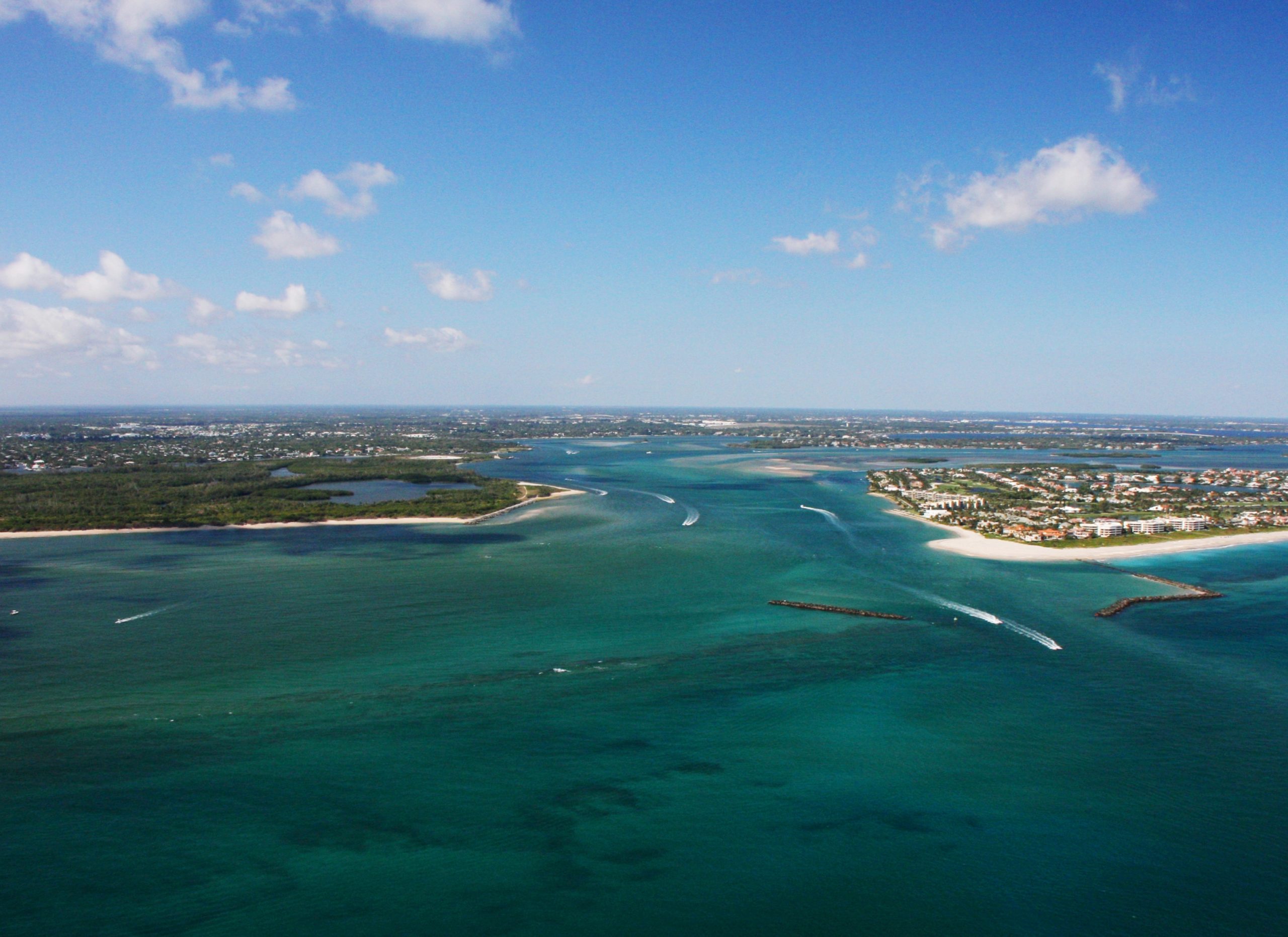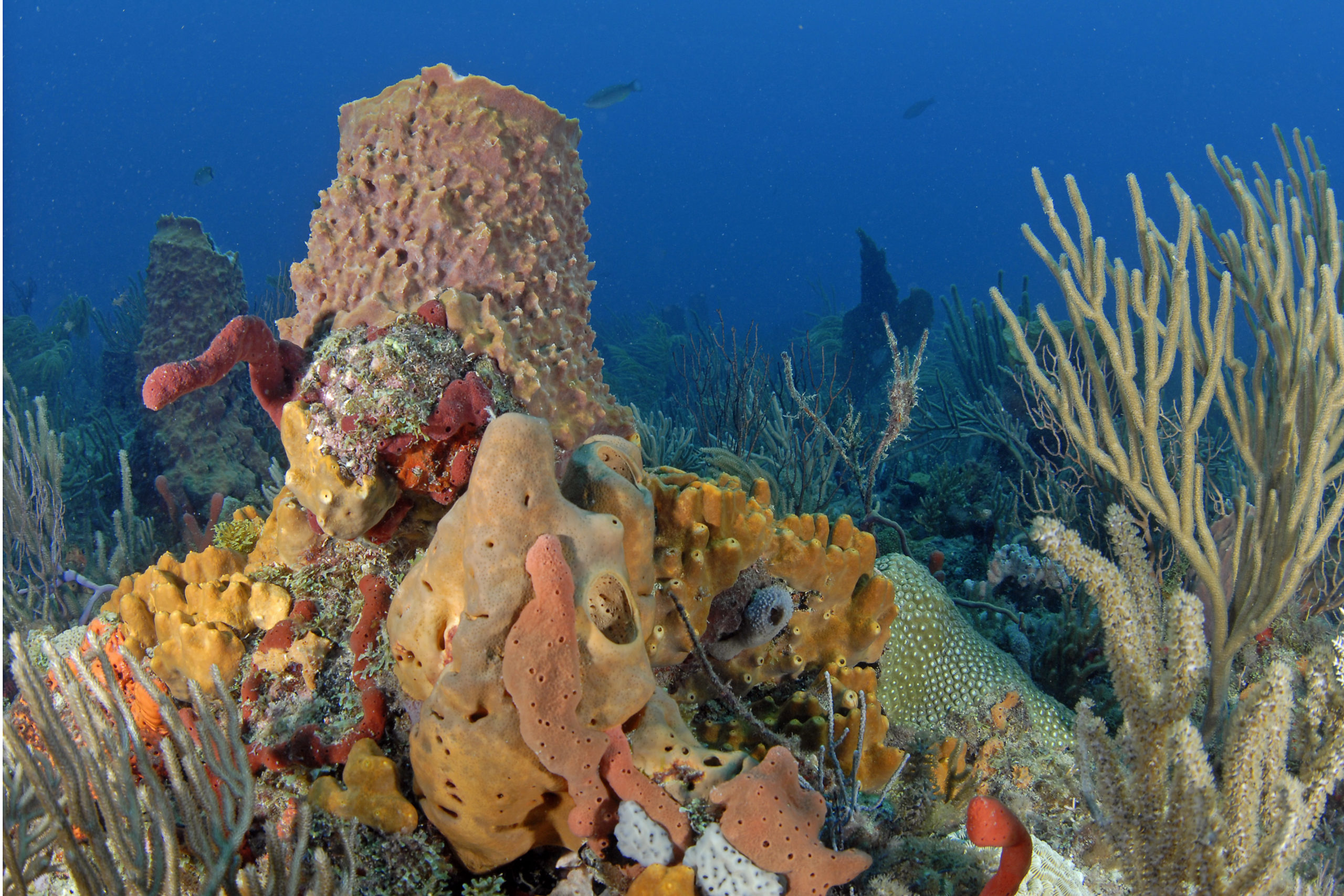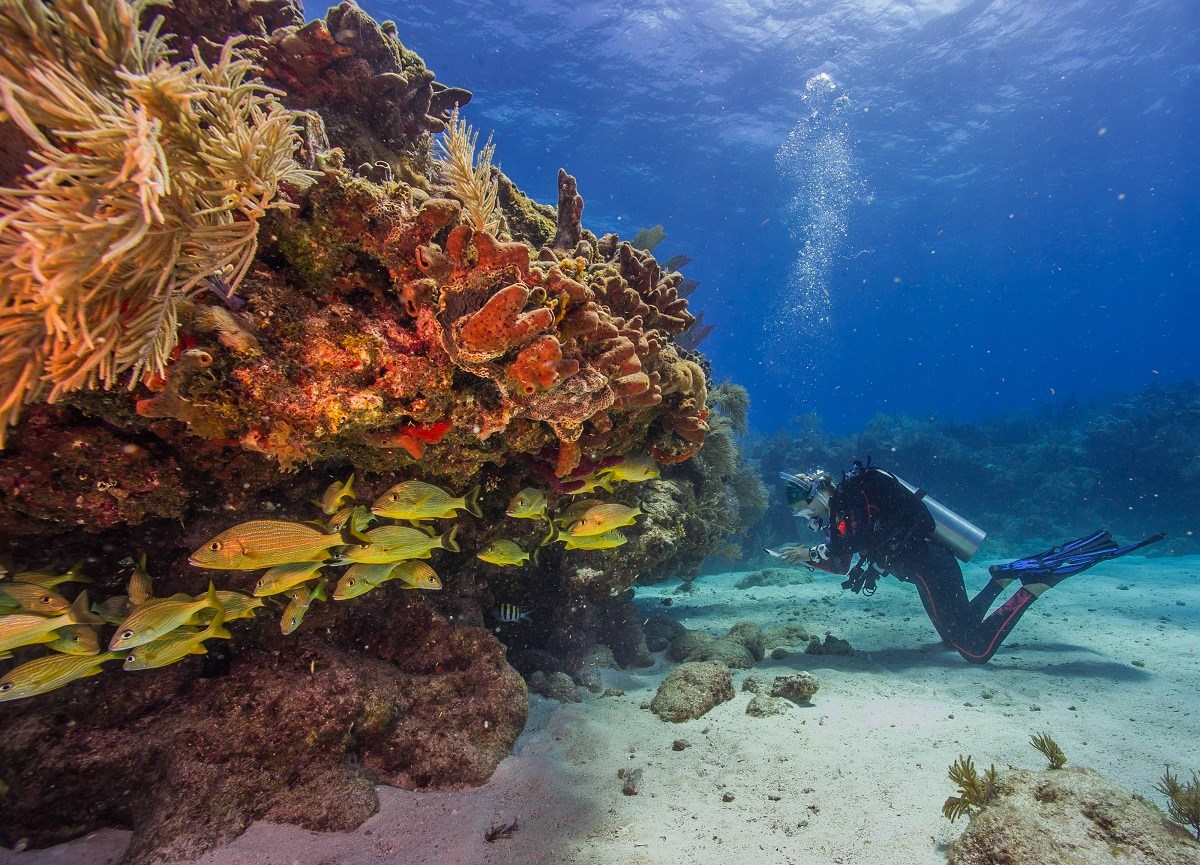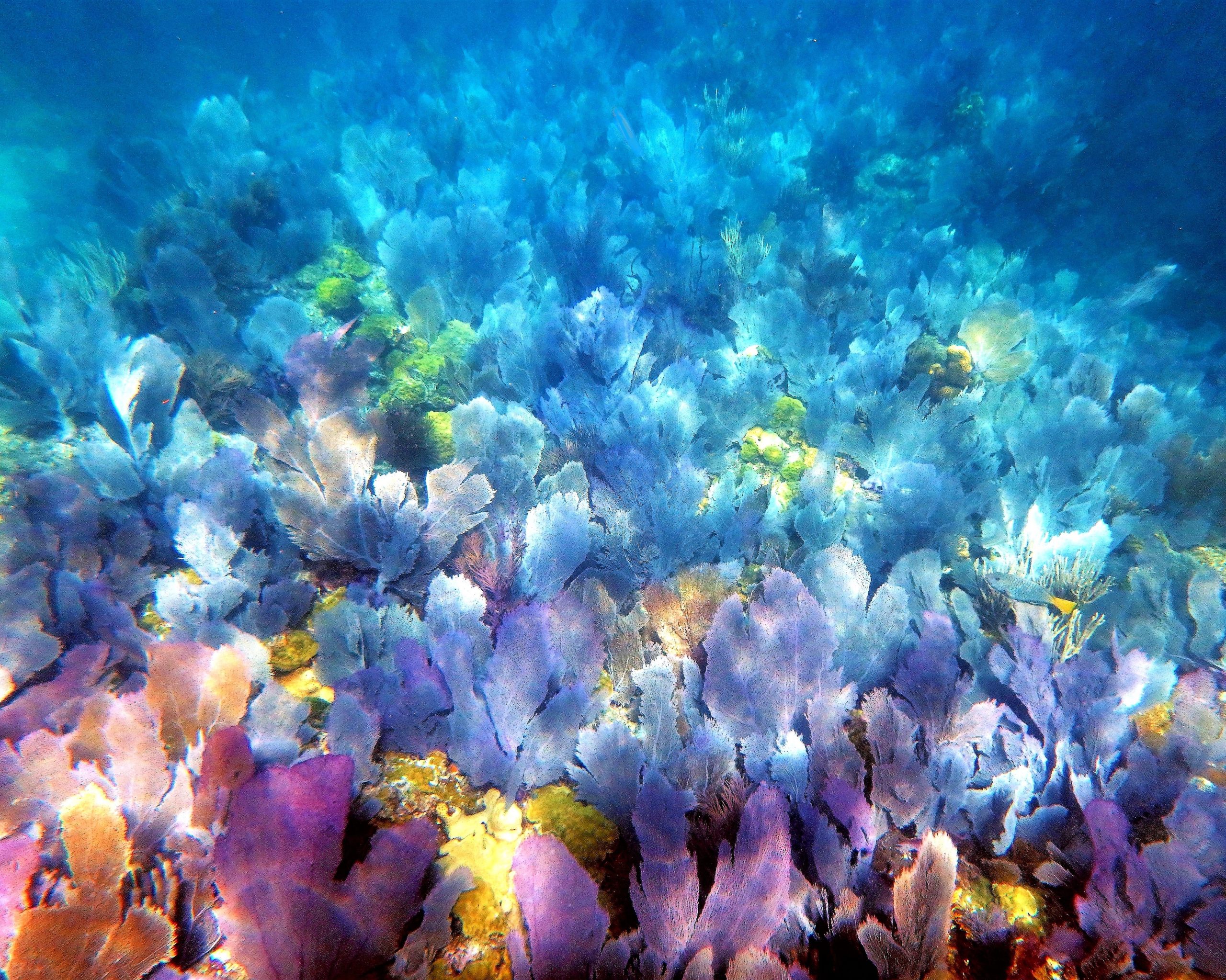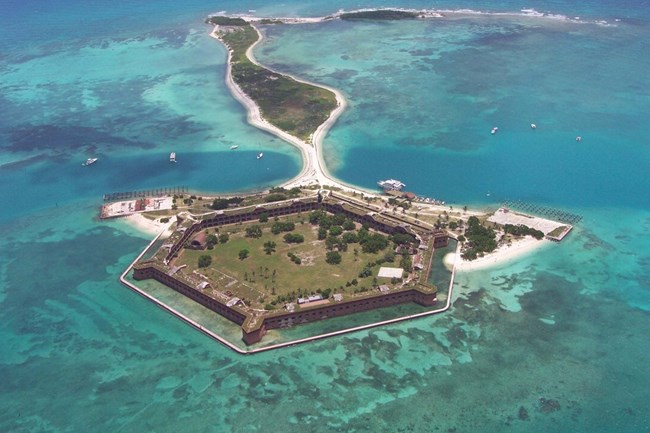Ecosystem and Habitats
Ecosystem
Florida’s Coral Reef is part of an interconnected ecosystem in Southeast Florida. The productivity and health of coral reefs are closely linked to nearby coastal habitats, including nearshore hardbottom, seagrass beds, mangrove and wetland coastlines, beaches, and estuarine areas where fresh and saltwater meet. Together, these habitats are among the most valuable in the world, providing us with food and shoreline protection as well as recreational and commercial opportunities.

Attribution: NPS image by Shaun Wolfe
The health of the entire Southeast Florida coastal ecosystem is dependent upon the health of its components. Floridians benefit from healthy and productive coral reefs, and we all need to help ensure that a strong and balanced community ecosystem exists in the future.
Habitats
Florida’s Coral Reef is an important natural environment that supports more than 6,000 species of marine life, including many of our locally important fishery species. Additionally, sea turtles depend on the reef for food and shelter, as do many large ocean inhabitants, including sharks, rays, eels, groupers and dolphins.

Nearshore hardbottom, part of the inner coral reef system located closest to shore, is an important habitat for juvenile fish and sea turtles as well as for a variety of invertebrates and algae. This area is also home to worm reefs, which may be so close to the shoreline that they are exposed during low tide.
Seagrass beds provide habitat where fish, lobsters and crabs can hide from predators. Seagrass also acts as a nursery for Florida’s recreationally and commercially important species – many of which depend on the coral reefs as adults. From sea urchins and conch to manatees and sea turtles, seagrasses are a source of food for a variety of marine life. They also help maintain water clarity by trapping and filtering sediments. Shallow seagrass beds can even protect shorelines by attenuating wave energy. Seagrasses are a major contributor of carbon sequestration, contributing 10% of the ocean’s capacity per year.
Mangrove forests are also a vitally important component of these interconnected coastal ecosystems. Their complex root systems help stabilize the shoreline and filter pollutants while also providing shelter and foraging opportunities for juvenile reef fish, birds and other marine life. It is estimated that 70% of game fish and 90% of commercial fish species in South Florida are dependent on mangrove forests during at least part of their life cycle.
Florida’s world-famous beaches and sand dunes are also an important part of our coastal habitat. Southeast Florida’s beaches are some of the most important sea turtle nesting sites in the state. Coral reefs help protect our beaches from erosion, and these beaches protect coastal structures and coastal habitats from the damaging effects of storms.
Everglades to Reef Connection
The South Florida peninsula once had a massive wetland that moved water very slowly from Lake Okeechobee to Florida Bay. Water from as far north as Kissimmee (just south of Orlando) flowed through the passes between Keys with varying strength at different times of year.
As development accelerated in South Florida, dikes and canals were built to manage flooding in urban environments and to redirect water to agricultural areas south of Lake Okeechobee, drastically altering the landscape and the natural flow of water through the Everglades.
Today, over 40% of the water is artificially diverted to the Gulf of America and the Atlantic Ocean. As a result, large quantities of untreated water travel directly from Lake Okeechobee to coastal estuaries and eventually flow out of inlets onto nearshore reefs. This can lead to elevated pollution, algal blooms, sedimentation and turbidity that negatively impact coral reefs and other marine life. Additionally, less clean water is reaching Florida Bay and the reefs of the Florida Keys, resulting in increased temperatures and salinity.
Management of this system has sought to balance improvement of water quality and wetland conservation with providing flood protection to developed South Florida. Many of these management strategies seek to mimic the ecosystem functions that were once provided by the Everglades when water moved through Florida’s watershed slowly to the coast, being filtered along the way.
One proactive strategy that seeks to improve the quality and quantity of water reaching coastal ecosystems is the Everglades Agricultural Area (EAA) reservoir project. The EAA includes two major features:
- A 6,500-acre treatment wetland that will clean water, known as a stormwater treatment area.
- A reservoir that will store excess water from Lake Okeechobee – up to 240,000 acre-feet of water – to minimize flow of untreated water to coastal habitats and reefs.
This and many other projects are part of the Comprehensive Everglades Restoration Plan, which is an ongoing, long-term interagency effort to restore the Everglades.
